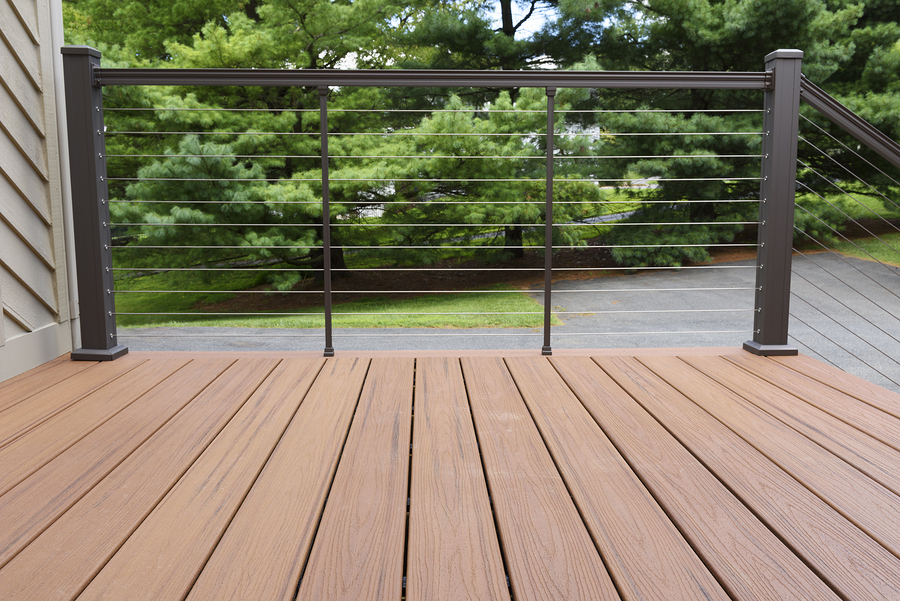There’s nothing like putting your feet up on your back deck and enjoying the sun. However, our Aussie summers can be brutal, so it’s important to make sure you select quality decking boards that can withstand the heat. And that means a deck that can take a summer’s worth of punishment from the Australian sun without fading, splitting or warping. It also means selecting decking boards that will be as gentle as possible on bare feet, even in the direct sun.
Different decking materials – composite decking, timber, plastic capped, metal – will react differently under the intense summer sun. Direct sun will cause different materials to expand, contract, warp, split, splinter and, of course, absorb and retain heat in different ways.
Let’s focus on the two most common decking materials: timber and composite.
In prolonged high heat, timber will lose moisture, which can lead to shrinking and splintering. This can be minimised by regularly painting, oiling or treating your deck.
Composite decking materials, on the other hand, won’t lose moisture and therefore won’t shrink, crack or splinter like timber under prolonged exposure to heat. This makes composite decking a safer summer option.
Thermal retention and conductivity
Thermal retention refers to how much heat a material can store over time. A material with high thermal retention properties will continue giving off radiant heat even after the ambient temperature has fallen.
Thermal conductivity, on the other hand, is how readily a material transfers heat. While both wood and plastic have fairly low levels of thermal conductivity, it is still high enough in both materials to cause significant discomfort to bare feet on a hot day. Your decking material’s thermal retention and conductivity can have a significant effect on how useable your deck is in summer.
There’s a common misconception that composite decking retains and transfers a lot more heat than traditional timber decking. However, this is not the case, especially as manufacturing methods have evolved over the past decades. Quality composite decking materials are comparable in temperature to a sealed timber deck even under direct summer sunlight.
Eco-friendly composite decking products made up of recycled plastics and reclaimed timber can conduct heat more readily than timber, due to the plastic content. However, the reality is that while composite decking may get a little hotter in direct sun, the temperature difference is unlikely to be discernible to your bare feet.
It’s also important to note that different brands of composite decking have different heat resistance properties so it’s important to do your homework before settling on your choice.
Decking colour counts
While different decking materials do show some variation in how hot they get, the primary factor that determines heat retention is colour. In general, the darker the decking material or the finish, the hotter it will get and that’s true for composite and timber decking materials.
In reality, it’s the colour of the decking material, not the composition, that is the most significant factor in terms of heat retention and transfer. If you’re building a deck that will be subjected to continuous direct sunlight, consider using the lightest colours available.
Be realistic
Any building material left out in the sun on a 40-degree day is going to become uncomfortably hot. So, when it comes to searching for heat-resistant decking material, be realistic.
To put it simply, there is no material that will make bare-footing across a deck on a 40-degree day a pleasant experience.
While composite decking will tend to get a little hotter than timber decking, the difference will be negligible and not discernible to bare feet.
All things considered, the benefits that composite decking provides in terms of longevity and maintenance far outweigh any minor differences in heat retention and transfer.
Other ways to cool your deck
It’s all about location. Whether you’ve decided to go with composite or timber decking, you can mitigate some of the issues associated with heat retention by carefully considering where you’re going to install your deck and what shade elements you can take advantage of.
Create your own shade by planting trees and installing awnings or umbrellas. A bit of shade, especially during the hottest parts of the day, will go a long way to ensuring your deck can be used all day long.
Partially enclosing or roofing your decking with a veranda or pergola is another good way to limit the direct sun.
Outdoor rugs are also a good way to reduce the under-foot heat from your deck.
You could also consider investing in misting fans. These are great for keeping cool. Quality composite decking, like Ekodeck, will come with a high anti-slip rating, so the moisture won’t make your decking too slippery.

